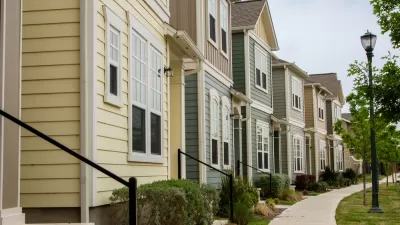More first-time, energy-conscious, urban home buyers with smaller households have contributed to a noticeable reduction in home size as shown in 2008-2009 housing Census data. Concurrently, lower-priced home sales outpaced more expensive homes.
Thirty years ago homes averaged 1700 sq. ft. Nonetheless, the 50 ft. drop to 2,422 sq.ft. from 2008-2009 is considered significant as home sizes had been increasing steadily.
"(T)he data do not indicate that buyers are looking for smaller homes because they think small is beautiful," Philadelphia economist Kevin Gillen, vice president of Econsult Corp, said. "Rather, they want homes that are more energy-efficient, with a more urban location and with fewer bedrooms, and that all naturally translates into a smaller home."
"On average, home sales for less than $350,000 have increased 12 percent year-over-year during the months since January 2009, while sales of houses priced from $350,000 to $900,000 have decreased 8 percent, said Michael Feder, president and CEO of Radar Logic of New York."
FULL STORY: As housing market shrinks, so does average size of new homes

Study: Maui’s Plan to Convert Vacation Rentals to Long-Term Housing Could Cause Nearly $1 Billion Economic Loss
The plan would reduce visitor accommodation by 25,% resulting in 1,900 jobs lost.

North Texas Transit Leaders Tout Benefits of TOD for Growing Region
At a summit focused on transit-oriented development, policymakers discussed how North Texas’ expanded light rail system can serve as a tool for economic growth.

Why Should We Subsidize Public Transportation?
Many public transit agencies face financial stress due to rising costs, declining fare revenue, and declining subsidies. Transit advocates must provide a strong business case for increasing public transit funding.

A Visual Celebration of Manhattan’s Chinatown Elder Community, Through Food
Lanterns, cafeteria trays, and community connection take center stage in this stunning photo essay.

How to Make US Trains Faster
Changes to boarding platforms and a switch to electric trains could improve U.S. passenger rail service without the added cost of high-speed rail.

Columbia’s Revitalized ‘Loop’ Is a Hub for Local Entrepreneurs
A focus on small businesses is helping a commercial corridor in Columbia, Missouri thrive.
Urban Design for Planners 1: Software Tools
This six-course series explores essential urban design concepts using open source software and equips planners with the tools they need to participate fully in the urban design process.
Planning for Universal Design
Learn the tools for implementing Universal Design in planning regulations.
City of Santa Clarita
Ascent Environmental
Institute for Housing and Urban Development Studies (IHS)
City of Grandview
Harvard GSD Executive Education
Toledo-Lucas County Plan Commissions
Salt Lake City
NYU Wagner Graduate School of Public Service




























